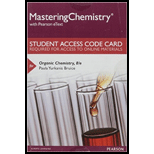
Concept explainers
(a)
Interpretation:
Given organic molecules has to be convert from Newman projection to skeletal structure and thus molecule should be named.
Concept introduction:
IUPAC systematic method:
Any organic molecule can be named by using certain rules given by IUPAC (International Union for Pure and applied chemistry). IUPAC name consists of three parts in major namely Prefix suffix and root word.
Skeletal formula:
It’s indicated as the line-angle formula or shorted formula of an organic compound is a type of molecular structural formula the indicated of molecular bonding and information its molecular geometry.
Conformers:
The different spatial arrangements of the atoms the result from rotation about a single bond are called conformational isomers.
Newman projection:
Its assume that the viewer is looking along the longitudinal axis of a particular carbon-carbon (C-C) bond. The carbon in front is represented by a point and the back is represented by a circle.
(b)
Interpretation:
Given organic molecules has to be convert from Newman projection to skeletal structure and thus molecule should be named.
Concept introduction:
IUPAC systematic method:
Any organic molecule can be named by using certain rules given by IUPAC (International Union for Pure and applied chemistry). IUPAC name consists of three parts in major namely prefix suffix and root word.
Skeletal formula:
It’s indicated as the line-angle formula or shorted formula of an organic compound is a type of molecular structural formula the indicated of molecular bonding and information its molecular geometry.
Conformers:
The different spatial arrangements of the atoms the result from rotation about a single bond are called conformational isomers.
Newman projection:
Its assume that the viewer is looking along the longitudinal axis of a particular carbon-carbon (C-C) bond. The carbon in front is represented by a point and the back is represented by a circle.
Want to see the full answer?
Check out a sample textbook solution
Chapter 3 Solutions
Organic Chemistry Study Guide and Solutions Manual, Books a la Carte Edition (8th Edition)
- Calculate the pH and the pOH of each of the following solutions at 25 °C for which the substances ionize completely: (a) 0.000259 M HClO4arrow_forwardWhat is the pH of a 1.0 L buffer made with 0.300 mol of HF (Ka = 6.8 × 10⁻⁴) and 0.200 mol of NaF to which 0.160 mol of NaOH were added?arrow_forwardDetermine if the following salt is neutral, acidic or basic. If acidic or basic, write the appropriate equilibrium equation for the acid or base that exists when the salt is dissolved in aqueous solution. If neutral, simply write only NR. Be sure to include the proper phases for all species within the reaction. NaN₃arrow_forward
- A. Draw the structure of each of the following alcohols. Then draw and name the product you would expect to produce by the oxidation of each. a. 4-Methyl-2-heptanol b. 3,4-Dimethyl-1-pentanol c. 4-Ethyl-2-heptanol d. 5,7-Dichloro-3-heptanolarrow_forwardWhat is the pH of a 1.0 L buffer made with 0.300 mol of HF (Ka = 6.8 × 10⁻⁴) and 0.200 mol of NaF to which 0.160 mol of NaOH were added?arrow_forwardCan I please get help with this.arrow_forward
- Determine if the following salt is neutral, acidic or basic. If acidic or basic, write the appropriate equilibrium equation for the acid or base that exists when the salt is dissolved in aqueous solution. If neutral, simply write only NR. Be sure to include the proper phases for all species within the reaction. N₂H₅ClO₄arrow_forwardPlease help me with identifying these.arrow_forwardCan I please get help with this?arrow_forward
 Organic Chemistry: A Guided InquiryChemistryISBN:9780618974122Author:Andrei StraumanisPublisher:Cengage Learning
Organic Chemistry: A Guided InquiryChemistryISBN:9780618974122Author:Andrei StraumanisPublisher:Cengage Learning
